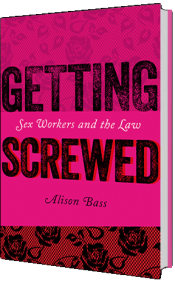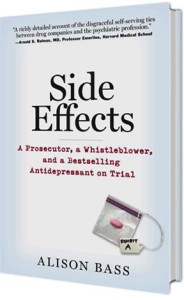Did you know that West Virginia has the second highest rate of deaths from prescription drug overdoses in the country? I didn’t, until I moved to the Mountain State to live and work and became curious as to what was behind this tragic statistic. According to a recent CDC report, drug overdoses now kill more West Virginians each year than car accidents do, which, if you’ve ever tried to navigate the treacherous mountain roads around here, is saying a lot.
Prescription drug overdoses, of course, are a national problem. As I’ve blogged about before, more Americans now die from taking too many legal drugs than from overdosing on illegal drugs like heroin and cocaine. A large part of the problem in both West Virginia and the nation is the exponential increase over the last decade in the use of legally prescribed opiate pain killers (like OyxContin and similar meds); these drugs were involved in 74 percent of the prescription drug overdoses in 2008 (the latest year stats were available), according to the CDC report. Doctors are prescribing these powerful painkillers too readily to patients who quickly become addicted to them and crave more.
However, that’s not the whole story, as a new study out of West Virginia indicates. The study, by researchers at West Virginia University (full disclosure: that’s where I teach), found that a greater proportion of people who had overdosed on prescription drugs in the Mountain State shopped around for doctors and pharmacies to fill their drug addiction. What I found surprising about this study was not that people who overdosed were doctor shoppers — that’s common sense — but that only 25 percent of those who died were shopping for prescriptions. That means that 75 percent of those who were killed by prescription drugs in West Virginia may not have been opiate drug addicts looking for a quick fix, but people who had no idea that the drugs they were legally prescribed by doctors could be lethal in some combination. Sadly, they may not have been fully informed that these drugs had dangerous side effects, side effects that could kill them.
Remember Heath Ledger, or the actress Brittany Murphy? They are among a growing army of Americans lulled by drug company marketing into thinking that legal drugs are safe and can help them sleep or feel better; after all, isn’t that what all those soothing TV ads promise? Since 1997, when Congress allowed the drug industry to market their wares directly to consumers, the number of Americans taking prescription drugs has soared nearly 40 percent and many of those people are imbibing multiple drugs, as I’ve blogged about here.
So why is the problem of prescription drug overdoses most acute in states like New Mexico, West Virginia, Nevada and Utah? I think socioeconomic factors play a big role here — in states where poverty, high unemployment and inadequate access to education may breed a sense of despair and hopelessness, there may be a greater reliance on powerful painkillers and psychoactive drugs to dull both physical and mental anguish. A health care system where some doctors hand out too many prescription drugs without fully alerting their patients to the side effects may only compound the problem. (The Charleston Gazette ran an excellent series last year on the problem and noted that many West Virginia doctors don’t use an available database to monitor prescriptions — see here and here).
Interestingly enough, Massachusetts (the state I lived in for many years before moving to West Virginia) has the lowest rate of prescription drug deaths — see CDC report. Again, the same factors could be at play here: the people in Massachusetts are among the most highly educated in the nation and the unemployment rate there is lower than the national average. In addition, Massachusetts was the first state in the nation to adopt universal health care, which means its residents have better access to quality health care than folks in West Virginia. And quality care means doctors and nurses who don’t over-prescribe potent drugs and who monitor their patients for dangerous side effects.
It also means consumers who educate themselves about the possible risks and think twice before taking a fistful of prescription drugs or sharing them with friends.



Thanks, Alison, for this article. Another factor that could be at play in W.Va. is the large senior population, many of whom have a strong, almost reverent, trust in our medical system.
That’s a great point, Diana — I think you’re absolutely right! Thanks for adding that factor to the mix.